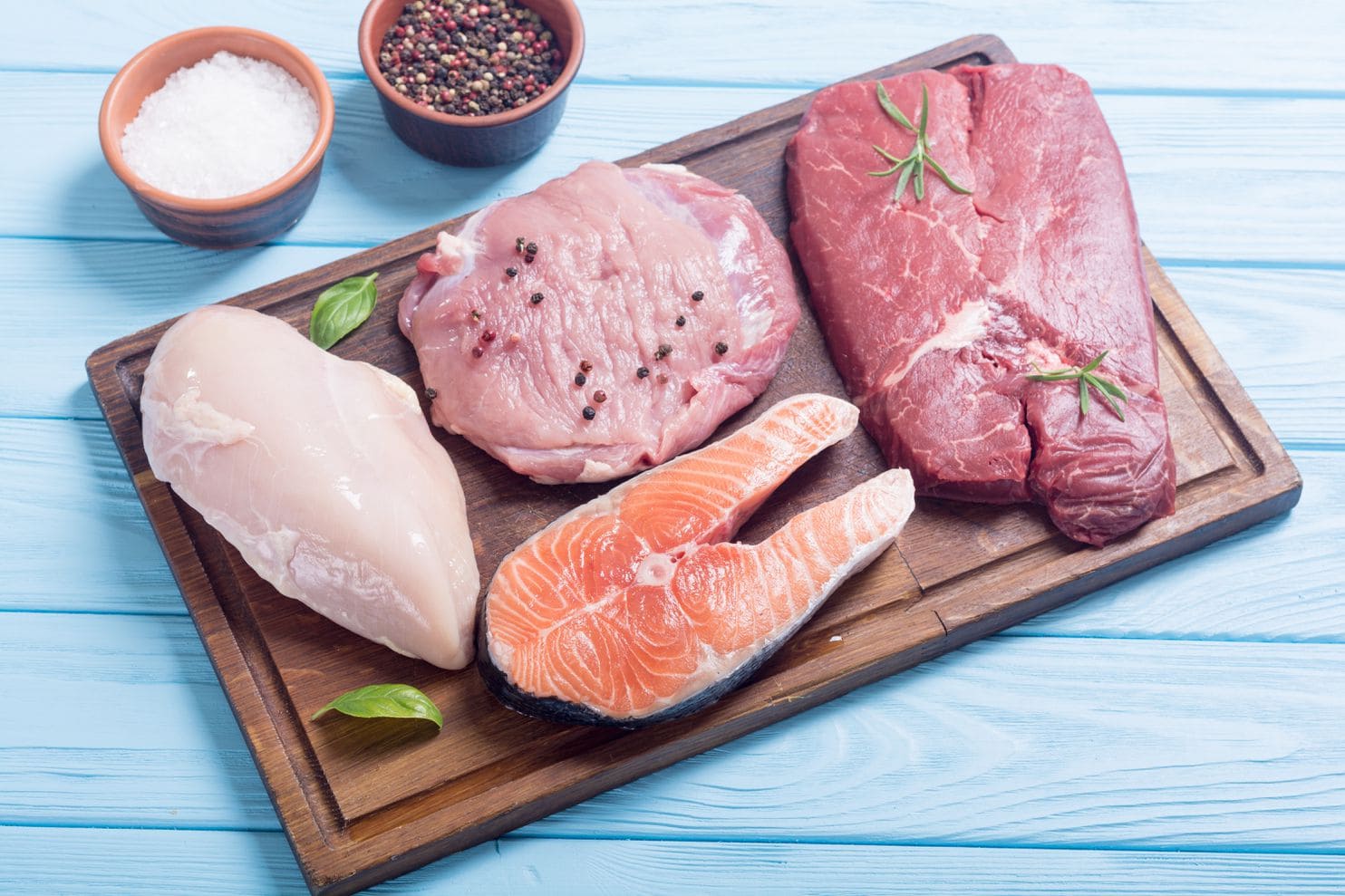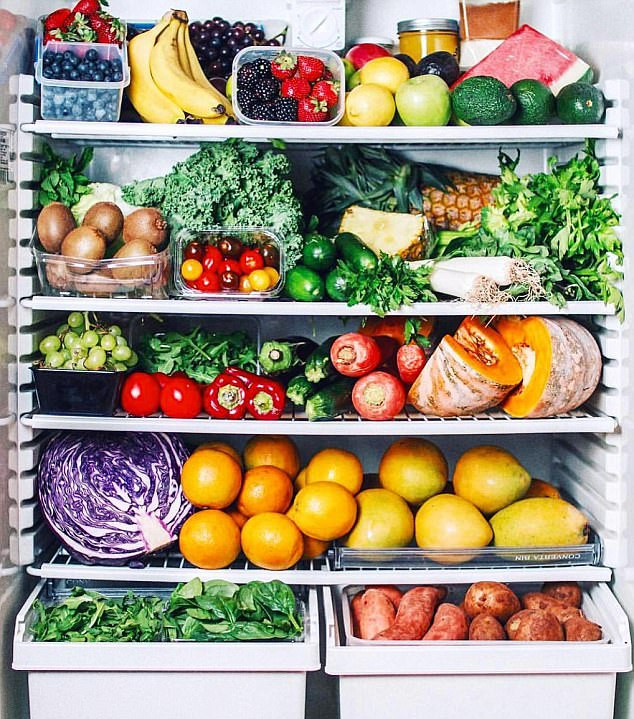Did you know that every food has an ideal spot in your fridge for storage?
Here are some important rules of thumb for organizing your fridge in order to optimize the freshness and longevity of your food, as well as keep you up to speed on some good food safety practices.

The Upper Shelves
The upper shelves of the fridge have the most consistent temperatures and the lower shelves are the coldest. Foods that do best on the upper shelves are those that don’t need to be cooked or are for reheating.
Examples of some upper shelf foods are hummus, olives and deli meat. Berries also last longer here as the temperature is the best.
Another ideal upper shelf item are herbs. They keep best washed and stored like a bouquet of flowers – in a glass jar with some water or in a container with a little bit of paper towel. The only exception to this is basil as its leaves will turn black in the fridge. Basil is best stored outside the fridge in a cool, dry place.
The Lower Shelves
Milk, yogurt, cheese, sour cream and fresh-squeezed juices do best on the lower shelves and not the fridge door, as this is the best consistently cold area.
Meat and Fish
It’s important to store these items safely in the fridge to stop bacteria from spreading and avoid food poisoning.
Store raw meat, poultry and fish in clean, sealed containers on the super-cold bottom shelf. This way if any juices drip, they won’t contaminate the whole fridge. Keep cooked meat separate from the raw meat and ready-to-eat foods in general to avoid further contamination. If ever in doubt, read the storage instructions on food labels.
Eggs
Although there are often egg holders located in fridge doors, some would say that the best place for eggs is actually on the lower shelves. While there is some debate about the ideal storage for eggs – whether room temp (Continental European way) or refrigerated (North American way) is best – the general consensus is that eggs should be stored in the most consistently cool area of the fridge for ultimate salmonella prevention.
Butter
As with eggs, there are differing opinions as to the best way to store butter. In agreement withUSDA and FDA guidelines, most butter companies say to keep butter refrigerated. And if we buy refrigerated, shouldn’t we store refrigerated?

My English grandmother would always store hers at room temperature (as well as milk and eggs). During her formative years, food in England was seasonal (no tomatoes in winter for example); there were no supermarkets, no frozen food or freezers to store it in, let alone any refrigerator repair services or anyone who knew much about fixing appliances. There were cold pantries / larders instead. These were commonplace in houses before the widespread use of the refrigerator and would help keep food cool for up to two to three days.
Interestingly, butter is mostly fat (usually about 80% fat) , which makes it less attractive to bacteria than products with high water content. And butter that is salted and / or made from pasturised milk is less prone to bacterial growth also.
Keeping butter in an airtight container makes it last at room temperature longer (about 2 weeks), but when room temperature rises above 70 ° F, all butter should be refrigerated, preferably the bottom of the fridge where the temperature is more consistently cold. Some say top shelf, others say lower, and some inside the fridge doors. The doors may not work if you are looking for temperature consistency though. Either way, if you keep the butter in its original foil wrap and, bearing in mind the expiration date, it should be good for at least 6 months. Just remember also that when using butter to wipe off any excess food that may get on it during cooking or food prep. I have seen old food residue on butter become moldy and contaminate the whole block.
The Fridge Doors
Mayo, ketchup, mustard, relish, mayo, bottled water, soda, juice all do best in the fridge doors. Why? The doors are the warmest area of the fridge and should be reserved for foods that are most resistant to spoiling. Keep condiments, which are generally rich in preservatives like salt and vinegar, pasturised juices, and other foods that can stand up to temperature fluctuations here.
The Bottom Drawers

The general practice is to put things that tend to rot in a drawer with a low-humidity setting. This includes fruits and veggies that emit an ethylene gas, like apples and pears, because leaving the window open on the drawer gives those gases a chance to escape. When the gases are released, it helps keep the fruit and vegetables from rotting prematurely.
Things that wilt go are more suited to the high-humidity drawer. This will be all your leafy greens, like arugula, spinach, and herbs could go here also (except basil). By having the window closed, water vapor is held in the drawer and the moisture keeps the greens crisper and fresher longer. Keeping fruits and vegetables that are sensitive to ethylene gas, like strawberries, in this drawer will also keep them away from ethylene producers.
Low-Humidity Drawer
The low-humidity drawer should contain the following produce that is not sensitive to moisture loss and are high-ethylene gas producers:
Fruits and vegetables to keep in the low-humidity drawer include: Apples, avocados bananas (ripe), cantaloupes, figs, honeydew melons, kiwis, mangoes, papayas, pears, plantains, stone fruits (apricots, nectarines, peaches, plums).
High-humidity Drawer
This drawer should contain the following produce that is sensitive to moisture loss:
Asparagus, broccoli, cauliflower, citrus, cucumbers, eggplant, green beans, greens (like chard, kale and spinach), lettuces, arugula, peppers, raspberries, squash, strawberries, and sweet potatoes.
Store items in the drawers no more than two-thirds full, in the original packaging or in a plastic bag, loosely tied (citrus is fine with no bag). Tip: Leave vegetables and fruits unwashed until you use them. Water can promote mold and cause bacteria to grow.
It’s also important to make sure your fridge is working properly. Check out ourrepair tips for refridgerators.
Knowing where your food fares best in your refrigerator and understanding the lower drawer humidity settings, will help you properly store your food, fruits and veggies, extend their shelf lives and potentially save you money. Once you get the hang of it, you’ll appreciate how useful this information really is!






GIPHY App Key not set. Please check settings